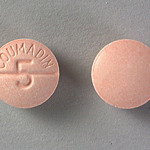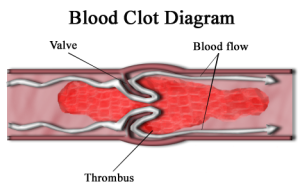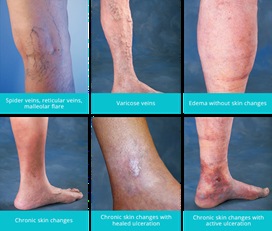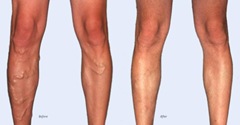Bluish and marble-like veins bulging out of your skin can be annoying and might affect your appearance. To avoid such discomfort and irritation, you need to undergo treatment, which can involve removing the vein. Clearly, these veins have suffered from damage, and this can lead to numerous complications. Removing the vein is the safest method to retain the appearance of your feet, legs, and hands.
What are Varicose Veins?
Varicose veins are bulgy, stretched, and prominent veins that may appear on your feet and legs. This condition occurs because of valve damage in your veins. There are valves on the start and end of every vein.
Because it is difficult for blood to travel against gravity back to the heart for purification, these valves direct blood flow forward. On the contrary, blood will pool inside the vein if valves lose their capability to direct the blood on the right path. As a result, the veins start to grow more visible, leading to discomfort, severe bleeding, and blood clotting. In addition to that, you may also develop skin ulcers, which cause severe pain and sores.

(Source)
Treatments of Varicose Veins
1. Sclerotherapy
Sclerotherapy is a non-invasive treatment. Many experts and patients consider this the painless varicose vein treatment. During this treatment, a vein specialist will inject a chemical solution in the varicose vein to shrink the vein’s lining by damaging the cells. This procedure does not involve a surgical process. But, the specialist will use an injection with a chemical solution or foam. Therefore, when the specialist inserts the sclerosant inside the vein, it irritates the vessels. Hence, the solution destroys the vein’s lining cells, forcing the veins to shrink.
The vein specialist will diagnose your condition before the treatment and inspect for the actual cause for varicose veins. They will examine the veins with ultrasound imaging, providing a clear picture of the situation. Generally, the procedure only takes 20 to 30 minutes. However, the specialist may take more time, depending upon the size and length of your vein. For instance, the doctor will introduce sclerosant foam instead of liquid inside longer veins.
Once the vein specialist injects the solution, they will rub the area to prevent blood from re-entering the vein. They will also ask you to wear tight stockings so the tissues can easily absorb the damaged vein. Likewise, this treatment can also treat spider veins, but you will require multiple sessions. Sessions will require gaps in between to allow recovery.
2. Laser Treatment
Laser technology is the latest advancement in the healthcare industry. A laser is simply a focused beam of light with high intensity. A vein specialist can treat varicose veins with devices emitting a laser beam. Due to high power and energy, these beam release heat, that the specialist use as a source to close the vein. Although there are two types of laser treatment for varicose veins, both uses laser heat as the source to damage the scar tissue, which eventually shrinks the vein. Once the vein loses its blood and shrinks, tissues start to absorb it. Once your vein disconnects with the circulation system, it requires two to three years to disappear completely.
3. Simple Laser Treatment
While performing this treatment, the vein specialist will use a laser device over your skin. They will trace over the varicose veins to damage the vein’s cells. This technique is perfect for tiny veins, but you need to undergo advanced laser treatment for larger veins. Furthermore, simple laser treatment helps remove the vein left after the endovenous laser treatment, radiofrequency treatment, and sclerotherapy.
4. Endovenous Laser Treatment
This is an extensive and invasive treatment and requires slight local anesthesia before treatment. A professional general surgeon will perform this treatment by passing a catheter inside the vein. This thin tube includes a laser device that helps close the ends of the varicose vein. During the procedure, the doctor will use an ultrasound device to locate and observe the vein.
5. Radiofrequency Treatment
Similar to Endovenous Laser Treatment, a vein specialist will insert a catheter. Instead of a laser, the tube will include a radiofrequency device. In this technique, specialists will use radiofrequency waves to generate heat. Likewise, with laser treatment and all other functions, the result will be the same.

(Source)
Varicose Vein Treatments: Conclusion
The initial symptoms of varicose veins are not life-threatening. Nevertheless, it can get severe and cause numerous health conditions such as skin Ulcer, bleeding, and blood clotting. You should visit a vein specialist before any severe symptoms occur. They will examine the severity of your condition and suggest proper treatment.
Dr. Norman Chideckel has extensive experience in treating vascular conditions. Contact us today at 212-993-6133 for a free consultation. We will inspect your condition and help you treat your varicose veins.




 injury. So foods that are rich in vitamin K should be eaten in moderation while on Coumadin. Also, since the Coumadin is detoxified (broken down), in the liver, it would be wise not to drink alcoholic beverages for the duration of time that you are on this medication.
injury. So foods that are rich in vitamin K should be eaten in moderation while on Coumadin. Also, since the Coumadin is detoxified (broken down), in the liver, it would be wise not to drink alcoholic beverages for the duration of time that you are on this medication.
 Symptoms of Varicose Veins.
Symptoms of Varicose Veins.